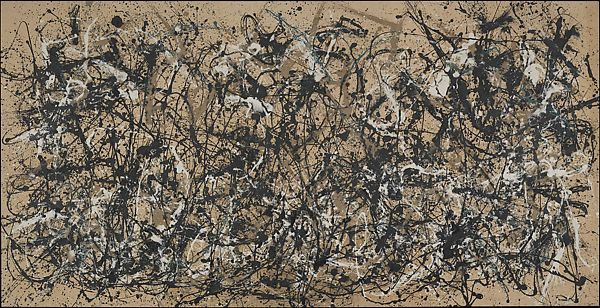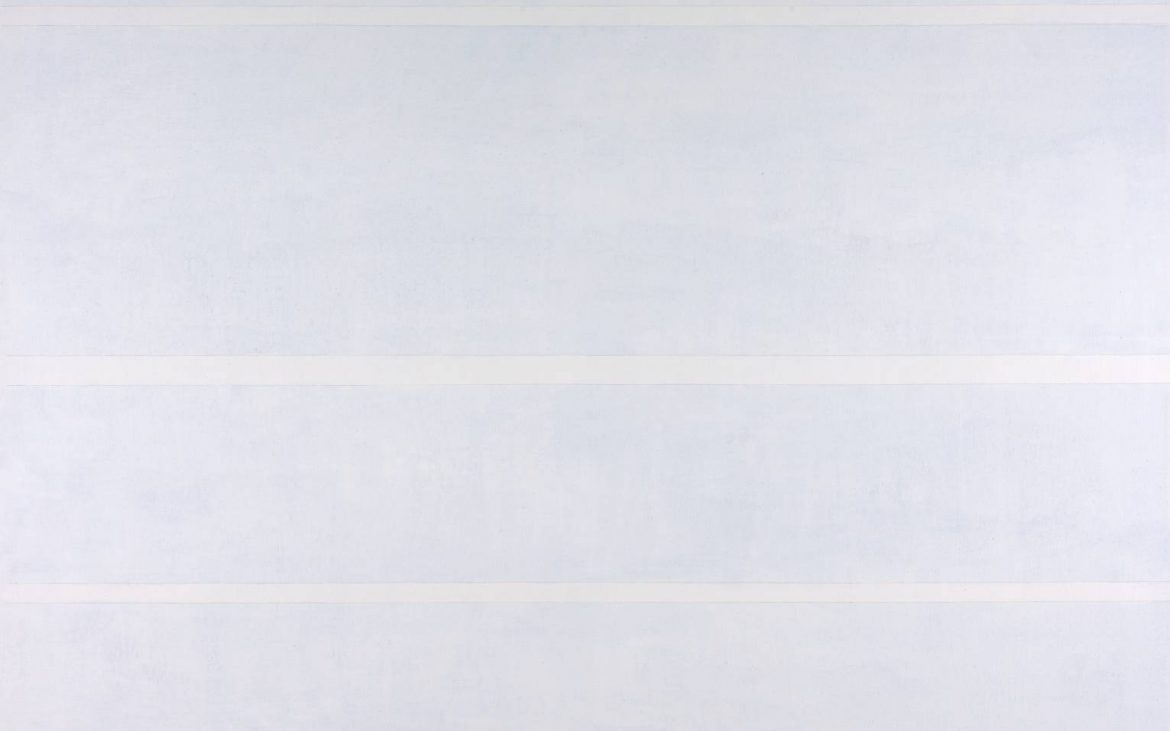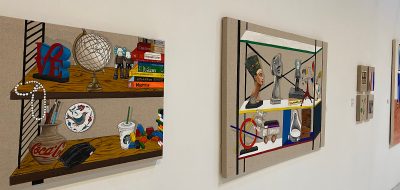Abstract paintings are confusing. More so are abstract expressionist ones. The whole movement can be characterized as the one that aims to use paint solely to express strong emotions (hence expressionism) in the purest form understandable for everyone (hence abstract). Unfortunately, the movement turned out too abstract and thus became an intellectual entertainment for an informed few. Let us assume then that we – my reader and I – are a part of that few. In the following essay I will try to distinguish three types of abstract expressionist paintings that I arbitrarily categorized according to the emotions expressed. Spoiler: even calmless can be expressed strongly.
Because I chose to proceed gradually from strong to calm, the first category would be represented by one of the most debated names in the twentieth century art world – Jackson Pollock. In particular, his famous work titled Autumn Rhythm, the one right below.

We see not paint applied to the canvas but violently splashed over the entirety of it. There is no place for a viewer’s eye to rest. It’s all exuberant energy of an agitated youthful spirit. The painting reminds me of the song ‘We Will Rock You’ by Queen. Autumn Rhythm practically screams “Buddy you’re a young man, hard man shouting in the street, gonna take on the world someday.” It is full of confused power aimed at nothing but the world that observes it shocked. This is the first type, the type expressing strength and unbounded emotion.
The second type is the one best explained through Mark Rothko’s works. I chose to describe his Orange and Red on Red to explain this type.

I associate this painting with Gnossienne No. 1 by Erik Satie. Yes, it is calm and stable, but there is something uneasy about it. The melody I associate, as well as the painting, has a quality of calm presence of something unfathomably strong and eerie. When I look at the painting, I feel intimidated. Although the orange color usually represents joy, its presence in this particular painting only makes the viewer feel more alerted. And let us not forget that this is actually a huge painting. Moreover, Rothko wanted his paintings to hang low, starting almost at the feet of the viewer. So imagine looking at this, or better yet this looking at you and standing tall with its calm and confident weight. Thus, this is the second type: strong feeling of emotional weight but expressed through thoughtfully applied paint.
The last type is the calmest. To best describe this type I have chosen the work titled Faraway Love by Agnes Martin.

No, the image is not loading; the painting is almost white on white. And that is the beauty of it. Imagine walking in MoMA (or wherever it is displayed), listening to Chopin’s Nocturne No. 2, and looking at these. Martin’s paintings, very much unlike the ones of Pollock, are manifestations of inner peace in its purest form. These show the viewer the beauty without showing almost anything. And one does see it still, for the Faraway Love gently touches the beauty within and so makes it visible. So here is the last type: softest of colors representing the softest of feelings in the softest – almost imperceptible – way.





